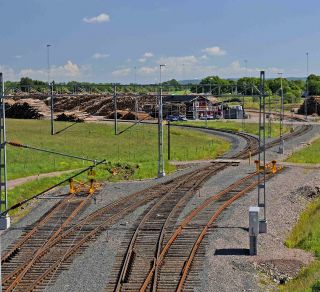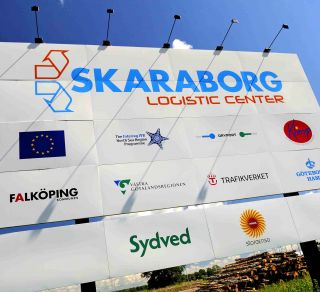 |
|

DryportDryport - a modal shift in practiceBackground and AimAim In a fully developed Dryport concept the seaport controls operations, but the terminal itself must not serve only one port as it can (should) be part of a larger network. Dryports are used more consciously than inland terminals in order to deal with increased (container) flows, with a focus on security and control through information and communication systems. The real difference is that the gates of the port are extended and that the forwarder sees the Dryport as an adequate interface towards port and shipping lines. Background Further action is needed to achieve the objectives of the EU White Paper on common transport policy. These objectives call for a return of the alternative modes to their 1998 share by 2010, and then increase this from then onwards. The increase in greenhouse gas emissions from transport threatens the Kyoto targets. Therefore, additional policy initiatives and instruments are needed.' ( quotes E.E.A. Copenhagen). Dryports was one of those instruments. Our industry around the North Sea must constantly develop its logistics systems in order to meet the geographic distance handicap to the rest of Europe. For exporting companies the added cost for this transport handicap equals to the labour cost. The necessity of controlling these logistics costs is therefore a question of survival. Parallel to this, the logistics systems create a large environmental impact that needs to be effectuated both on a short term and long-term basis. Links and nodes for efficient transport and logistics operations are essential in this vision. Effective links between roads, rail connections and waterways and between nodes & terminals lead to increased logistics efficiency, lower costs, higher capital effectiveness and improved competition possibilities for the northern region in Europe. The bulk of the freight flows that is transported by road goes to and from the immediate Hinterland of major Gateways. The dryport concept aimed at these short and mid range road transport flows. New was to achieve a modal shift from road to rail and/or inland waterways by integrating gateway freight handling systems with hinterland nodes based on smart IT solutions.
Information HubDryport Quarterly_Issue 1
Dryport Quarterly_Issue 2 Dryport Quarterly_Issue 3 Dryport Quarterly_Issue 4 Dryport Quarterly_Issue 5 Dryport Quarterly_Issue 6 Dryport Quarterly_Issue 7 Dryport Quarterly_Issue 8 Dryport Quarterly_Issue 9 Emmen; strengthening logistic hub Emmen; Needs for a Railterminal Emmen; dryport magazine special Emmen; Presentation at congress Emmen; GOLD declaration IAW Bremen - Governance report IAW Bremen - summary Governance report IAW Bremen - presentation case study IAW Bremen - presentation logistic hubs IAW Bremen - presentation governance patterns SEStran; Coatbridge, Scotland's dryport SEStran; study freight consolidation SEStran; study rail freight SEStran; sustainable urban distribution TRI Napier; project achievements TRI Napier; overview publications Falköping overview Falköping presentation public sector Falköping presentation Skaraborg logistic center Port of Göteborg; where to realize new Trafikverket; RFID in Rail Vgland_flyer VGland RFID full report VGland 4 questions to Bergman VGland RFID info VGland PPT template for common use Haven Gateway employment land review Haven Gateway Impact logistics & ports Haven Gateway Impact logistics & ports, summary Haven Gateway leaflet Babergh guide for planning logistics Babergh leaflet annual 2008 significance of Dryports annual 2008 regional logistics conference Edinburgh Scottish dryport conference Edinburgh Spanish dryport conference Edinburgh Swedish railport conference Edinburgh Stratmos annual 2011 introduction annual 2011 Haven Gateway annual 2011 Future cooperation final conference May 2012 Reflection on dryports LP Brochure Dryport LP Dryport in pictures summary wp 2 publicity summary wp 3 financial & land assesment summary wp 4 the physical planning of a dryport summary wp 5 IT & Security summary wp 6 environmental aspects 6 & MoS summary WP 7 Governance socio-economic aspects Dryport logo There are no related videos
|







.jpg)










.jpg)